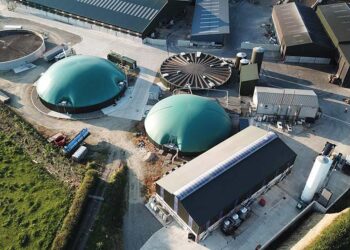Lille Allen
Crab’s favorite seasoning is more versatile than you might think
There’s always a bit of an eye roll when out-of-staters reduce Marylanders to crabs, Old Bay, and our perhaps inordinate love of the state’s flag. The thing is, they’re not wrong. Picking crabs is a coveted tradition where I come from, one that every family big or small, acquired or chosen, looks forward to when summer rolls around. As for the flag — in a sea of state seals-on-blue, can you blame us?
But Old Bay? In the 30-plus years since it was acquired by the Texas-based McCormick, the seasoning blend has made its way into spice cabinets far beyond the mid-Atlantic, making it arguably less of a Maryland thing. It may come as no surprise, then, to know that Old Bay works with far more than just blue crabs.
To understand why, all you have to do is look at the sum of its parts. While the exact spice blend has been kept under proverbial lock and key ever since the German-Jewish immigrant Gustav Brunn founded the Baltimore Spice Company in the late 1930s, McCormick is willing to tell us that Brunn’s secret recipe relies heavily on the flavors of celery salt, paprika, and mustard seed.
To my palate, celery salt is the most-pronounced of this trifecta, which is likely why I’m more of a J.O. fan — the lesser known, still-family-owned local spice company touts a blend that leans saltier and slightly spicier than Old Bay. But if you use celery salt as your guide, both Old Bay and J.O. can tag along in any number of recipes, from soups and stews to pasta, potato, and other picnic salads in need of earthy depth. Basic math even suggests that Old Bay would work in place of celery salt on a Chicago dog (I say this trepidatiously, knowing how fiercely Chicagoans protect their coveted classic from suggested substitutions).
Justin Tsucalas
Celery salt is also often a big player in the spice blend that rims bloody mary glasses, as is paprika, another one of Old Bay’s pillar ingredients. So it’s no surprise that brunch menus throughout the mid-Atlantic and Carolinas call out Old Bay as a cocktail ingredient. But the spice blend’s booze-centric uses go beyond bloody marys. Gimlets, for one, take well to celery’s fresh, earthy aroma; infusing gin with Old Bay to strain into a chilled glass with a bit of lime juice, green chartreuse, and a dash or two of celery bitters makes for a cocktail that feels and tastes like summertime anytime.
Then there’s Old Bay’s note of paprika, which broadens its horizons even further. If you’re making deviled eggs, try showering them with Old Bay in place of pimenton. Or blend Old Bay into a tangy, brick-red romesco sauce to slather onto sandwiches, pair with crudites, or drizzle over steak. Heck, go ahead and crust the steak in Old Bay before it hits the cast iron!
If Old Bay’s mustard seed is your muse, try taking a tip from the South Asian dishes that rely on mustard oil, the reverberating, sinus-clearing extraction of mustard seeds. The Bengali dish shorshe maach braises tender fish filets in a flavorful curry spiked with chiles, garlic, and cilantro. Try adding Old Bay in place of or in addition to the ground mustard seeds in the dish’s spice paste. Alternatively, take another look at pickles. No matter where they’re made in the world, their brine often calls for whole mustard seeds, which makes a sprinkle of Old Bay a natural addition — even a quick pickle will benefit from the depth it brings.
Mustard seed isn’t the only source of Old Bay’s subtle heat. Ginger, white and black pepper, and (some speculate) cayenne all lend their Scovilles to the spice blend. This makes Old Bay a natural partner to both popcorn and vasos de fruta, the cups of fresh, sliced fruit topped with chamoy and chile-lime seasoning that are popular throughout Mexico, Southern California, and everywhere, really. Or consider a riff on Nashville hot chicken, the regional specialty now beloved from coast to coast. Dunked in or mopped up with a fiery cayenne-laced chile oil, it’s not for the faint of heart. So if you’re cooking for palates that prefer less heat, using Old Bay in place of straight cayenne still paints a compelling picture. And if you really want to go hard, why not throw on some of those Old Bay pickles in place of the usual bread and butter?
Justin Tsucalas
On the back of its canister, Old Bay publicizes its compatibility with chicken, fish, and shrimp, but that only scratches the surface. The blend works with just about any type of seafood, though I’d use a moderate hand with delicate ingredients like lobster, which Old Bay’s flavors can quickly overpower. To amp up fried cod or broiled salmon though, Old Bay is a bet.
Why not try a twist on mala xiang guo, the hot and numbing Chinese dry pot dish that blooms spices in oil before meat or seafood, aromatics, and crunchy veggies are stir-fried in the same fragrant liquid. You could sub Old Bay for the spice blend for a more straightforward mid-Atlantic profile, or add it along with the Sichuan peppercorns, black cardamom, and dried citrus peel for a cultural mashup all its own. And instead of Shaoxing, the ubiquitous Chinese cooking wine, perhaps use sherry, which is an old friend of Old Bay’s and a staple ingredient in cream of crab soup. As this mouth-numbing dish is made to be customized, the choice of add-ins is entirely yours. Maybe you stick to traditional ingredients like wood ear mushrooms and sliced lotus root. Or maybe you nod back to the mid-Atlantic’s crab feast or the Lowcountry’s crawfish boil and throw in coins of corn on the cob and hunks of potato.
Using Old Bay or a similar seafood spice blend as a vehicle for cross-cultural culinary collaboration is nothing new. In the early aughts, Vietnamese immigrants in the Gulf laid the groundwork for the now world-renowned Viet-Cajun crawfish boil. It takes sucking only one sweet claw to realize how well pungent lemongrass, ginger, garlic, fiery chiles, Old Bay, and tons of butter work with crawfish — or any crustacean, for that matter. Chef Steve Chu of the lauded Baltimore restaurant Ekiben has whipped up his own riff: Old Bay and Sriracha-marinated shrimp salad stuffed into springy bao buns with mango and papaya slaw. An instant hit.
Now, as versatile as Old Bay is, it doesn’t work with everything. I’ve seen my fair share of Old Bay riffs that don’t end up panning out. Ice cream worked better than I expected. Chocolate chip cookies? Not so much. But there’s no denying that while Old Bay is often associated with crab and crab alone — and the one time of year that crab is available — its flexibility far exceeds its reputation, and the season.
Justin Tsucalas is an award-winning photographer and owner of Plaid Photo, a Baltimore, Maryland-based studio.
Creative director and set designer Giulietta Pinna specializes in visual content creation for commercial and editorial food, interior, lifestyle, product and still life projects.














